|
Part 6: Spring 2022 to Present
Page 2
New Water Brushes
For many years I have used portable water brushes for subway sketching because an open water container on a crowded subway is not a good idea.
I've used the common squeeze-type waterbrush and also a pocket size piston type water brush from a company called Blue Heron Arts.
After a few years I noticed that the rubber stopper inside the Blue Heron water brushes had started to disintegrate, and there was no way to get the loose pieces of rubber out of the barrel because it is glued shut. So the water chamber was full of floating black rubber pieces which sometimes came out and onto the sketch. I was ready to simply buy new water brushes but first decided to search the web to see if anything else was available.
I discovered a Chinese piston brush pen on many web sites including Amazon and eBay. These are a bit larger than the Blue Heron Arts water brush, and can be taken apart. I saw their potential as water brushes although they are not advertised as water brushes. Since they were inexpensive, I ordered some from both web sites, and they turned out to be perfect for subway sketching.
If you click on any of the images they will take you to a larger one.
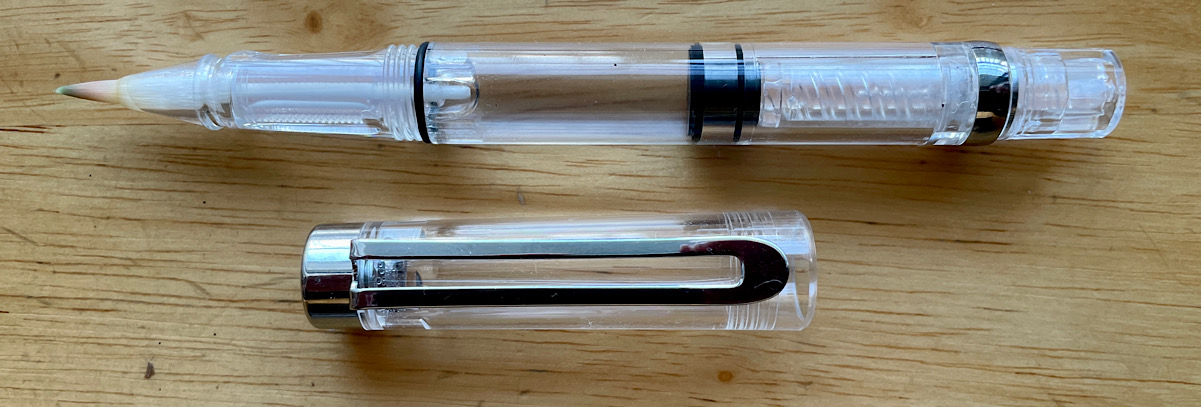
These brush pens are the same size as fountain pens and fit perfectly in the pen loop of my Filofax pocket size notebook. There is also space for my tissue thumb rings, a few Kohinoor short clutch pencils, some plastic sleeves for the trading-card size watercolor paper, and of course my vacuum-formed palette.
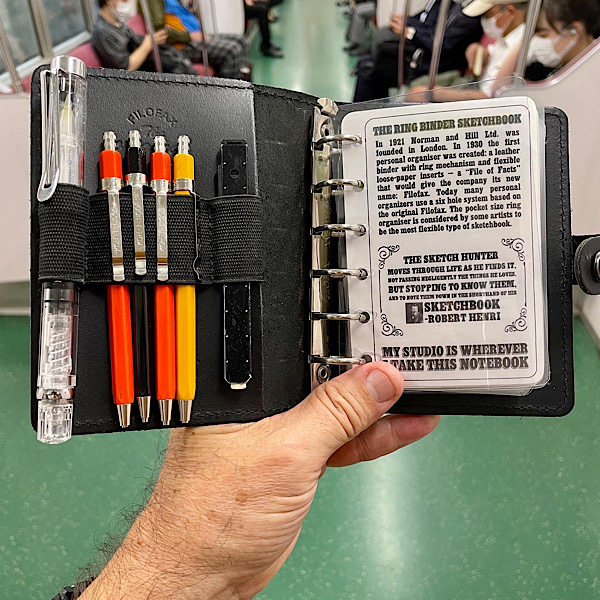
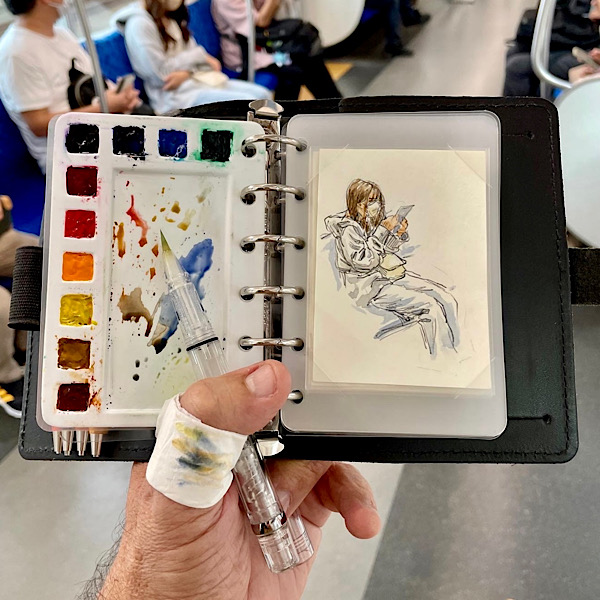
The Filofax loaded with all this stuff is pretty fat and clunky, so there are times when I don't want to carry it around, preferring a smaller and lighter sketching kit. Then I must carry the water brush in my shirt pocket. But it doesn't make a lot of sense to carry a water brush in the shirt pocket all day when I only use it for sketching on the train.
I have dreamed of having a water brush that was small enough to carry in a small pocket size watercolor kit, and one day I discovered that such a thing was already in my possession.
A Tiny Piston Water Brush
I have several brush sections for Kuretake brush pens which will take a Platinum cartridge converter. I filled one with water and tried it with watercolors, and it worked. Then I removed this unit from the barrel and cap to make a very small water brush. Since it contains water instead of ink, there is no need for a cap.
One caveat is that an old converter may be loose and easily separate from the brush section, but a new converter will fit snugly and stay there. Since I used to sell Platinum fountain pens on the web, I have a lot of new converters still in their boxes.

So I made yet another watercolor box that fits this new tool and have been using it with no problem on the train. Okay, there is one problem. The water capacity is so small that you will barely make it through one sketch, and that is only if you don't make generous washes. So you need one water brush for each sketch. With my long commute, I can produce several sketches in a day, so I carry a bunch of extra brush/converter units in my bag.
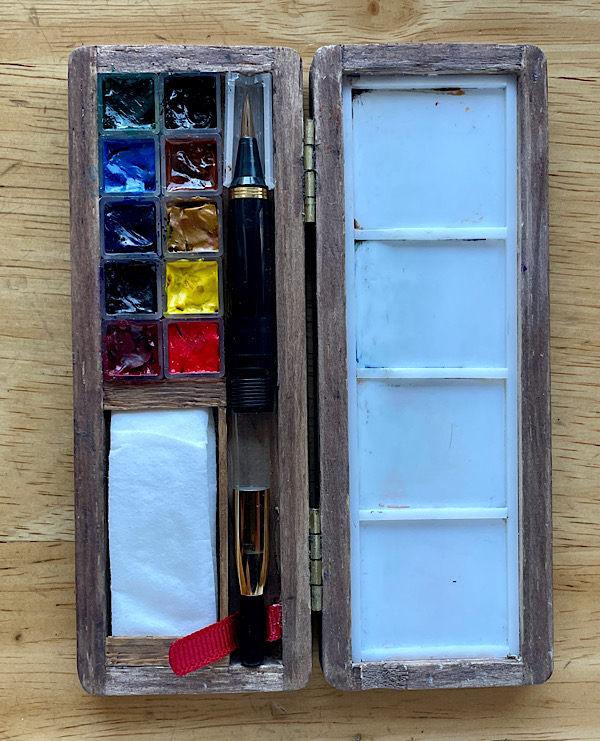
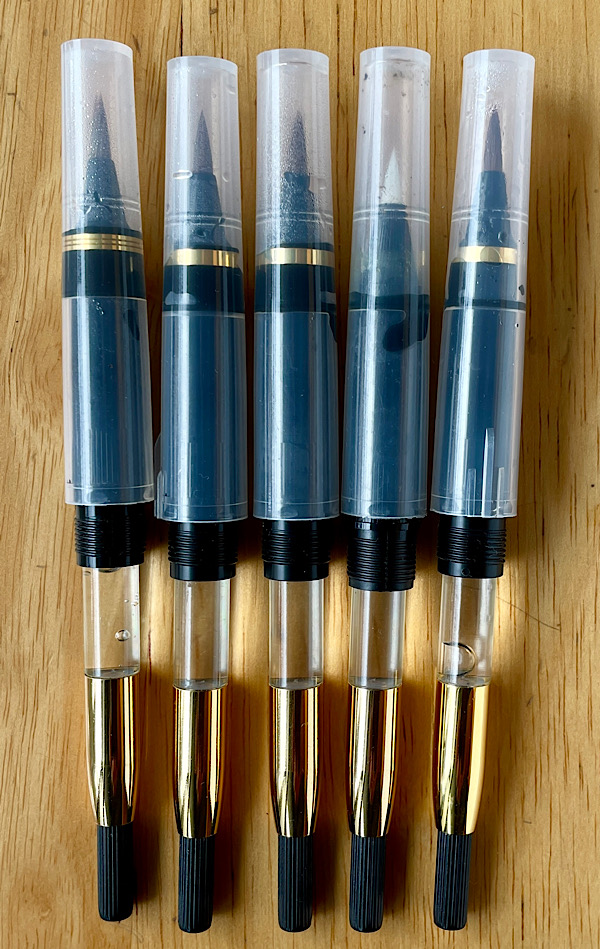
Some people have questioned the practicality of using a piston water brush for sketching, but it is not too hard to master the art of turning the piston end cap with one hand, but if you simply scrub the brush against the palette a bit, water will come out through capillary action, which is enough for a small sketch. I've been using piston water brushes for subway sketching for many years with no difficulty.
|

